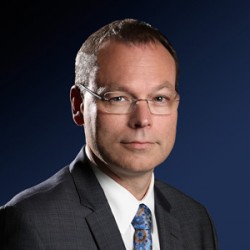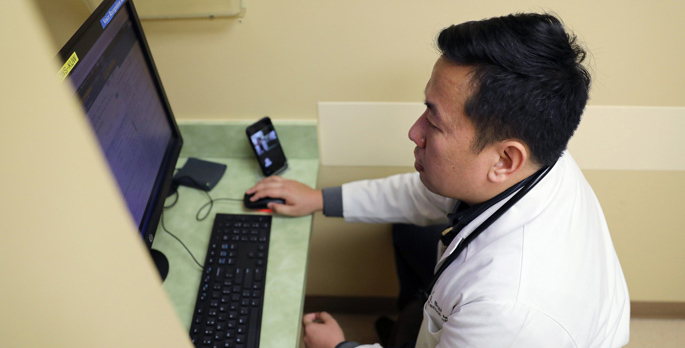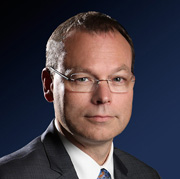Dear Colleagues,
As we move forward with our cost reduction efforts throughout the Medical Center, I pledged to provide timely and substantive updates. In this message, I will summarize the status of our strategic change initiative Evolve to Excel (E2E). I will also answer questions that have come from our own people throughout VUMC, as well as patients and community supporters.

To recap, our nation’s academic medical centers along with most health systems have reached an inflection point in economic growth. We live in a global economy. With the U.S. significantly outspending all other developed nations on health care, there wasn’t a question whether substantive change would occur, but rather when. The future has arrived — we are experiencing substantial revenue reductions from Medicare and Medicaid, insurance that covers half of our patients, while also helping to support resident physician training and the disproportionate share of uninsured patients we treat. And as the population ages, the fraction of our patients using Medicare is rising rapidly. For academic medical centers like ours with significant research programs, an absolute reduction to research funding by the National Institutes of Health is also a new reality.
The good news is we have not been in denial about these inevitable changes. More than 18 months ago we began significant cost reductions. Over the summer, we have set about the task of reengineering our workplace in a way that will not damage, but rather will further sustain the strength and viability of our core missions — patient care, education and research.
As a national leader, we have been distinctive in our efforts to communicate broadly the large-scale change necessary for us to thrive in health care’s future, and in doing so we are attracting the attention of academic medical center peers and the news media. Already, because we have been transparent about our actions, others in our industry have contacted us to inquire about our methods. This regional and nationwide dialogue will continue to grow.
The E2E workflow redesign efforts are off to a strong start. Our work at this stage has not been focused on individual employees, but instead is aimed at strategically redesigning work activities in a manner that will ultimately reduce the workforce needed to perform our core missions. During the first weeks, leaders supporting all VUMC areas have been through a structured process that reexamines our vast array of activities and work products.
We intend to use the E2E work redesign proposals being created now by our area leaders as catalysts for creating more effective and cost-efficient operating models. This activity-driven perspective has resonated with our area leaders, and the level of commitment and engagement from our teams has been impressive. As we have engaged this work throughout the Medical Center, our collaborative, “can-do” culture has been visible and energizing.
The most effective spokespersons for our medical center have, and will always be, our own people. In response to many excellent questions, I provide below a set of FAQs that I believe you will find informative. I also hope you will find these helpful when addressing questions from our patients and community supporters. Thank you for your enduring support as we continue pivotal work that will anchor us in maintaining the qualities of VUMC we value most, while propelling us to implement the sustainable operating models we know are necessary to secure our future.
Q: I have always admired Vanderbilt’s unique collegial culture. How do you plan to implement this process without compromising our culture and our Medical Center Credo?
A: There is broad awareness that our culture is something that makes Vanderbilt very special. Like all institutions, the culture we experience and appreciate is only present because we put our core values into practice — in good times and in times of challenge. So as we engage the E2E process, faculty, staff and administrators must recognize the importance of effecting change in a manner consistent with our core values. Values that are particularly important for us to remember as we move through E2E include displaying respect and empathy; working for the good of the whole, as opposed to ourselves or even our own operating units; and accepting ownership and accountability in public dialogue.
In addition, how we choose to communicate during this period is a definition of our core values, and will play a major role in how the entire organization feels about the E2E process for years to come. As such, we must continue to communicate frequently and clearly, and articulate decisions in a manner that reflects integrity and fairness. Decision processes will continue to engage those closest to the work, allowing as much informative input as possible as we move through each work redesign stage.
Q: As we focus on reducing our expenses, does this mean that we will deemphasize the non- or less-profitable areas of the Medical Center, such as research and teaching?
A: Education, research and patient care are and will continue to be our core missions, and they are intricately interwoven. The efforts we are undertaking to improve efficiency and cost effectiveness are intended to strengthen and ensure the future for all three of our core missions. At the same time, we are entering an era demanding far greater economic efficiency in the performance of all mission activities. For example, when considering new programs, the need to prioritize and replace, versus simply add, will be ever more important as we move forward.
Q: Why is everything happening so quickly?
A: Because we knew our industry was changing and we would eventually see declining revenue, VUMC began to take action two years ago. These efforts focused on both process improvement and cost savings. We were successful during this period, reducing operating costs over time by more than $60 million. As federal budget sequestration began in the spring of 2013, reductions in revenue per clinical encounter and in federal research revenue remarkably accelerated, and even now we are seeing continued reductions. We have accelerated our own efforts to address these financial pressures.
Q: Is the Medical Center in trouble financially?
A: No. The Medical Center is fundamentally financially sound, but will remain so only if we address the financial pressures in a timely, thoughtful and strategic manner. With your support, we have continued to achieve our operating budgets despite unprecedented economic circumstances. Through significant and proactive measures over the past year, including holding vacation accrual and delaying salary increases, we have not utilized cash reserves or incurred additional debt to meet our obligations, unlike many medical centers across the U.S. The actions we are now taking will assure VUMC continues to operate in a fiscally sound manner, furthering our core missions as a strong resource for our patients, students and the nation.
While downsizing our workforce in a manner that allows us to operate more cost effectively, the Medical Center has and will continue to grow in impact, influence and scale in all of its mission areas. As evidence of the Medical Center’s continued momentum, the School of Medicine was named among the nation’s most innovative by the American Medical Association, making it one of only 11 schools among 120 nationwide to achieve this distinction. Student demand is at historic high levels in medicine and nursing, with nearly 6,000 students applying for 100 positions in the incoming 2013 M.D. class. The Medical Center’s research enterprise is among a very small number to experience steady gains in external support, despite nationwide reductions from the NIH, due to robust growth in philanthropy, industry and foundation support. Five adult and pediatric clinical specialties are ranked among the nation’s top 10 by U.S. News & World Report, an all-time VUMC record. And the Vanderbilt-led health affiliate network, VHAN, already includes over 30 outstanding nonprofit hospitals across Tennessee and Southwestern Virginia. Through a low-cost affiliation model, VHAN has become one of the nation’s fastest growing health networks, and will help to assure our ability to thrive in the restructured health care environment that requires us to serve broad populations across the full continuum of health care needs.
Q: Couldn’t we make these decisions over a longer timeframe?
A: While we are moving through this process of change in a strategic manner, our approach must be both timely and deliberate. The financial pressures cascading from the federal budget deficit present VUMC and essentially all other academic medical centers with unprecedented challenges across all missions — patient care, education and research. We must deal with these challenges promptly and effectively to sustain the health of our organization and prepare for the future.
Q: Will downsizing be equal across the enterprise?
A: This effort is strategic. We are not implementing the typical straight percentage “across the board” reductions many organizations experience during periods of economic challenge. Rather, cost reductions will be anchored in a mission-focused and structured process that reexamines our activities and work products. Through E2E, these efforts will provide a strong operating foundation, tightly linking the key work on activities essential to our success to role responsibilities — creating an “activity-driven” perspective for job functions.
At the same time, we are looking for opportunities where work is being duplicated, or perhaps could be performed more efficiently. Our initial and most intensive efforts surround administrative and support functions serving all mission areas — education, research and clinical care. Patient care areas are being evaluated with a primary focus on management and administrative functions, and only secondarily with regard to direct patient care activities. Changes impacting clinical areas will be data-driven with oversight by VUMC clinical leaders.
Q: Who is making decisions about these changes?
A: While consultants are helping us identify opportunities for improved cost effectiveness, we want to be clear that our own VUMC leaders, including department leaders and area managers, are making all decisions about workflow redesign and process improvement. Our consultants are here to help us obtain, organize and analyze information but will not be making nor communicating these decisions.
Q: How will you assure that these changes will not compromise quality of care?
A: E2E process changes that could impact patient care settings will be intensely evaluated, and no change will be accepted that could adversely impact the quality of care or patient safety. To assure this, all changes recommended that could impact patient care areas in any manner will be thoroughly reviewed by VUMC clinical leadership well in advance of implementation. We recognize that any redesign of workflow requires detailed consideration of job function and scope of responsibility. The highest standard in quality of care is our signature. As we effect change, the welfare of our patients will remain our foremost concern.
Q: How did you determine the cost reduction amounts of $100M in FY14 and $250M over two years?
A: While estimates, these amounts are based on projections of our present and future revenue. For example, we began FY14 on July 1 facing a $70 million revenue shortfall compared to the prior year, with additional near-term revenue reductions likely. The overall target of $250 million by the end of fiscal year 2015 is intended to offset longer-term reductions to reimbursements and research funding we have projected through detailed analysis of industry trends.
Q: Are all medical centers doing this? It feels like we are approaching this more aggressively than other hospitals.
A: The changes we are making, including staffing reductions, have already occurred and will continue to occur at many local and regional hospitals. Nationally, academic and non-academic medical centers like ours are nearly all effecting cost reductions as large or even larger than we are undertaking. For perspective, $100 million represents an overall operating expense reduction of 3 percent, while $250 million equals approximately 8 percent of our annual expense. Many health systems across the U.S. are reducing expenses by 10 percent to 30 percent.
Q: What if we think a decision is flawed? How do we communicate our ideas and concerns?
A: We encourage you to contact us with ideas for improvement or with specific concerns about proposed changes that may have unintended consequences, such as an adverse impact to related services or functions. The E2E operational redesign team includes clinical and administrative leaders from across the entire organization. You can identify the E2E leaders for your area by contacting the Vice Chancellor’s Suggestion Box, or through your area manager/departmental leader.
Sincerely,
Jeff Balser, M.D., Ph.D.
Vice Chancellor for Health Affairs
and Dean of the School of Medicine















